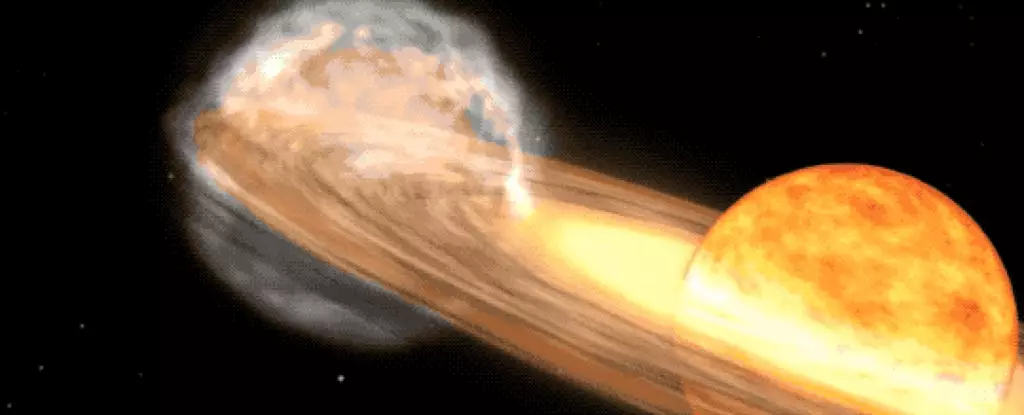In the vast expanse of space, a rare and extraordinary event is set to unfold in the night sky sometime between now and September. A binary star system located 3,000 light years from Earth in the constellation Corona Borealis is gearing up to showcase a mesmerizing spectacle that will captivate the attention of both amateur astronomers and space enthusiasts alike.
The stars in this binary system are locked in a deadly embrace, with exchanges between them fueling a runaway nuclear explosion once every 80 years or so. This phenomenon results in a burst of light that illuminates the cosmos, creating the illusion of a new star suddenly appearing in the night sky, shining as brightly as the North Star. While this event may seem surreal, it has been observed before by humans, with the first sighting documented by Irish polymath John Birmingham in 1866 and a subsequent reappearance in 1946.
The two stars in this binary system, T Coronae Borealis, have distinct characteristics that set them apart. One star is a cool dying red giant, having exhausted its hydrogen fuel and expanded to a significant size. The other star is a white dwarf, representing a later stage in the lifecycle of a star, where only its dense core remains after shedding its outer layers. The white dwarf orbits the red giant every 227 days, showcasing the peculiar closeness between the two stars and the unique dynamics at play.
As matter ejected by the red giant accumulates on the surface of the white dwarf over an 80-year period, a tipping point is reached where the accumulated mass triggers a runaway thermonuclear reaction. This reaction culminates in a massive explosion, causing the temperature to skyrocket to 100-200 million degrees Celsius within seconds, as described by German astronomer Joachim Krautter. The intensity of this explosion generates a burst of light that dazzles the observers on Earth, marking the occurrence of the recurring nova event.
With the impending outburst of T Coronae Borealis on the horizon, astronomers are gearing up to study and observe this rare celestial event. Sumner Starrfield, an astronomer at Arizona State University, has been actively involved in researching T Coronae Borealis since the 1960s and is eagerly anticipating the nova’s “outburst.” Starrfield, along with other experts in the field, is working on scientific papers to predict and analyze the implications of this recurring nova event, offering valuable insights into the workings of the cosmos.
While cutting-edge telescopes like the James Webb Space Telescope will be focused on capturing the celestial fireworks of T Coronae Borealis, sky gazers on Earth can also witness this cosmic spectacle without the need for advanced technology. By simply looking towards the constellation Corona Borealis during the anticipated timeframe, observers can catch a glimpse of this rare and awe-inspiring event unfolding in the night sky. As the world prepares for other astronomical marvels such as the upcoming total solar eclipse, the recurring nova event serves as a reminder of the wonders that the universe has in store for us.

Leave a Reply